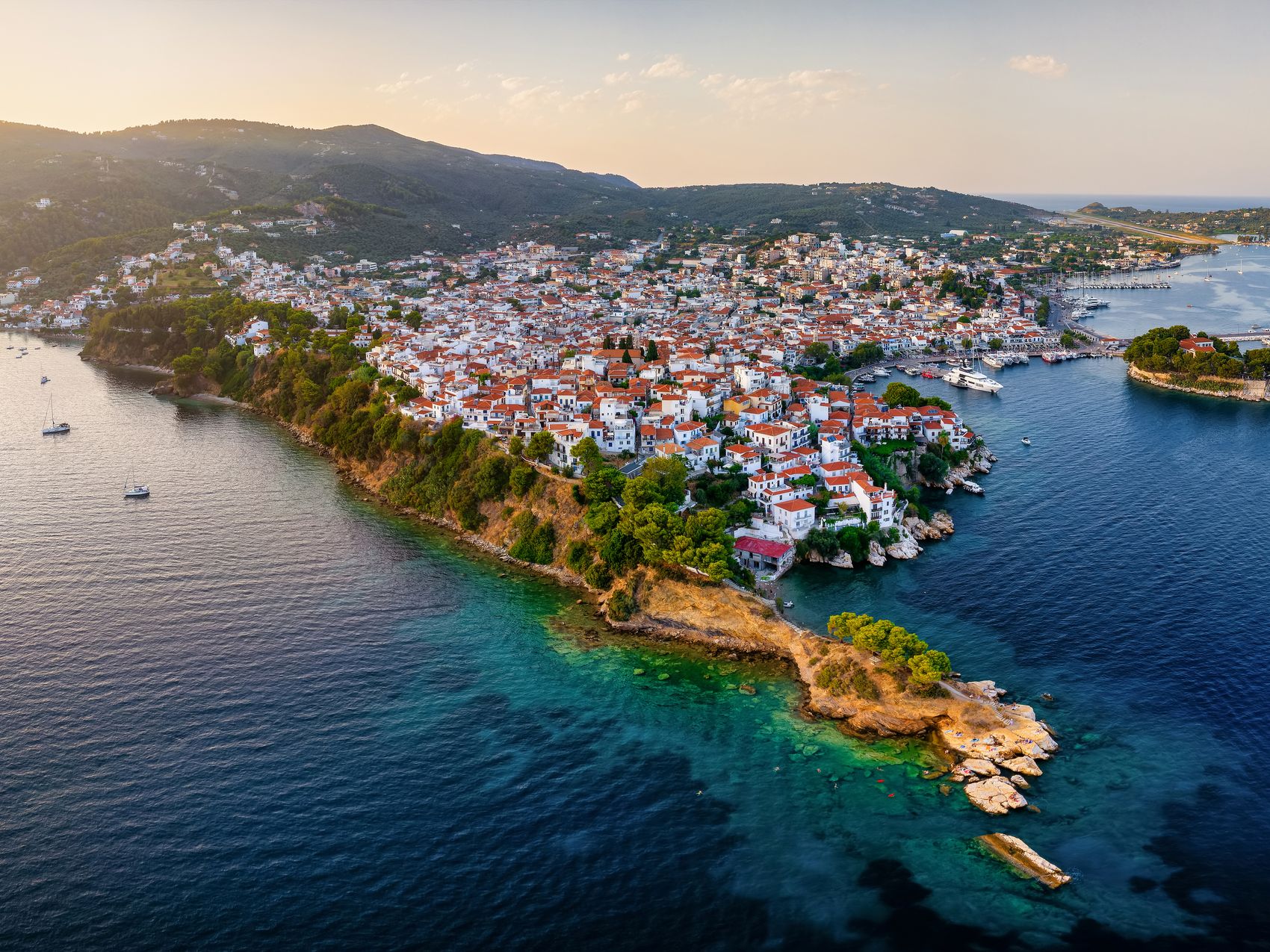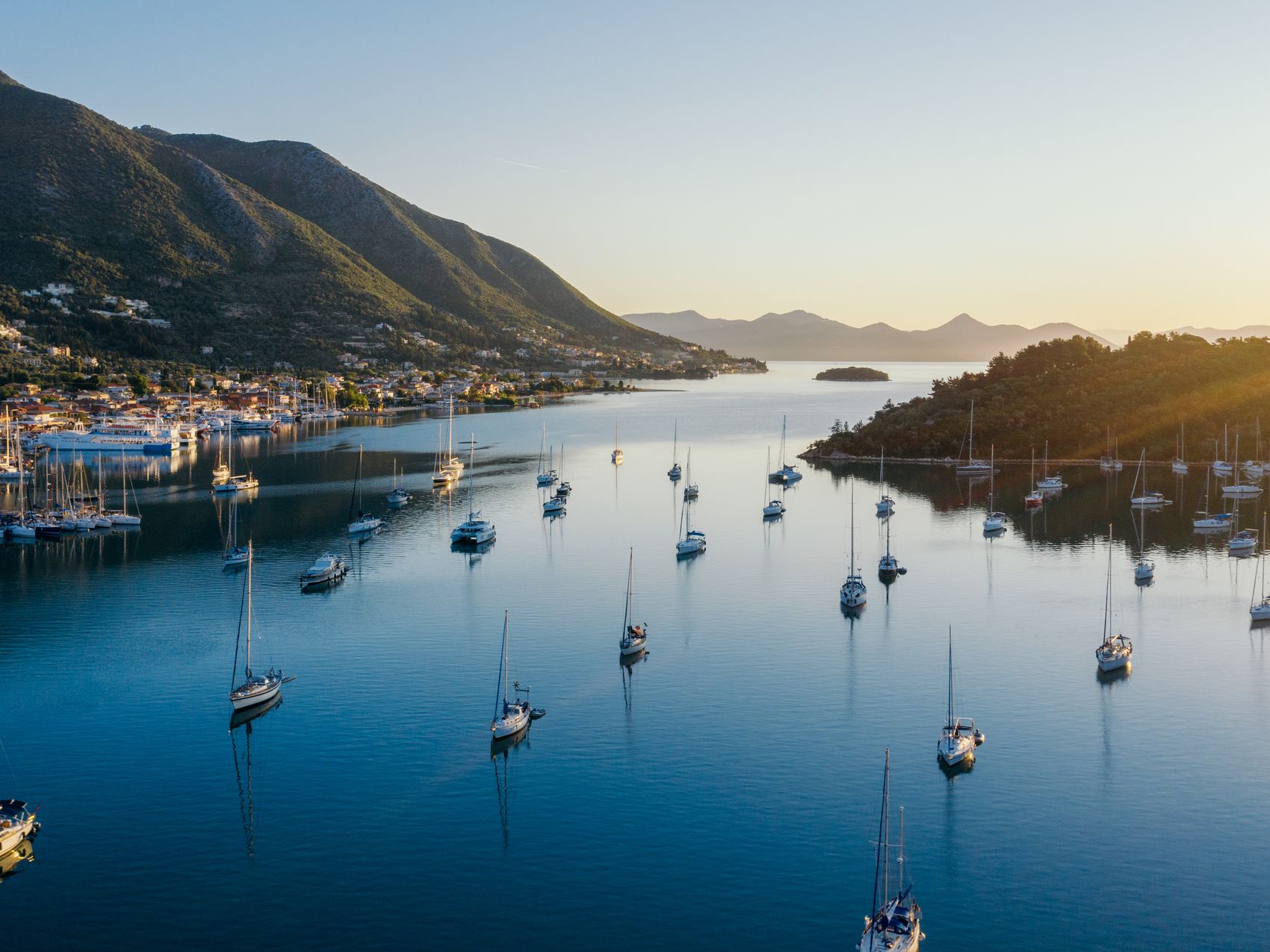Sporades Islands boast irresistible areas for sailing. It is a sailor’s dream playground with 24 scattered islands, making it an exceptional place for an island-hopping tour. Ideal winds, numerous sheltered and secluded bays, optimal distances and colorful scenery are factors that count when deciding on a relaxed yet enriching sailing trip. Explore one of the best sailing areas in Greece without hoards of tourists.
Why Sporades?
Sporades lies in the West Aegean Sea, and the most popular part of Sporades is the northern one. East Sporades are better suited for sports yachtsmen. Northern Sporades is a must-sail destination for those who seek easy sailing combined with sightseeing and relaxation.
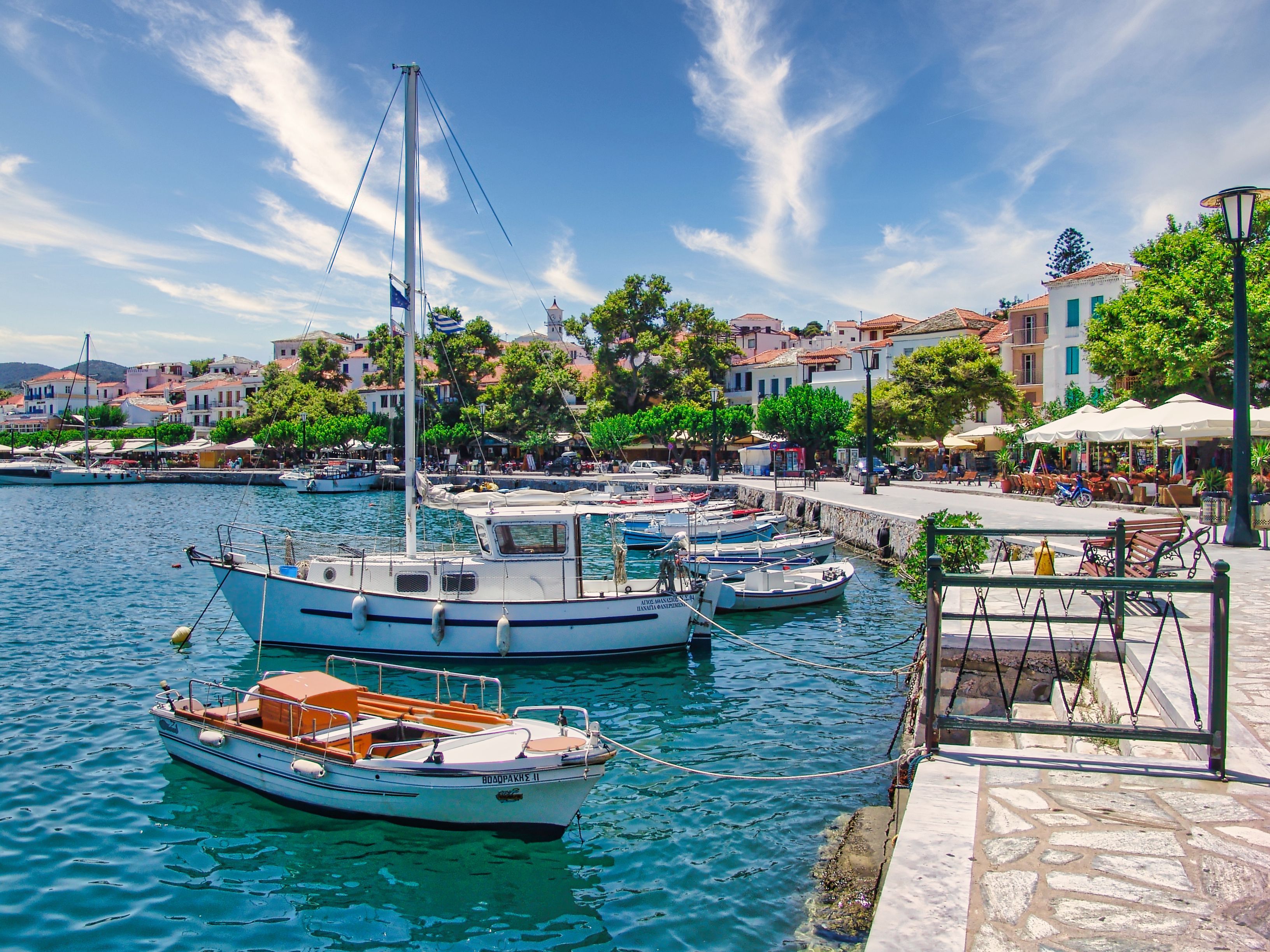
Newbies especially will feel relieved to be able to sail under steady sailing conditions. Although meltemi blows in this location as well, the wind is weaker than elsewhere, and the sea stays flat with low waves.
Apart from the island Skiathos, the nearest one to the mainland, the other Sporades are a bit less touristy. One of the best things about Sporades is the endless number of potential stops and overnight anchorages or harbors, from more buzzing to very tranquil ones. Coastal towns are relatively new, and their architecture is pretty distinctive. White, pink and blue-washed houses combined with green pine trees and lush vegetation, sapphire waters and white sand will boost your mood every day.
Skopelos, the largest island, is dotted with densely wooded trees stretching out to the most beautiful beaches. The unspoiled Alonnisos, adjacent Peristera and Kyra Panagia (Pelagos) are all part of the marine park - the largest marine protected area in Europe. To enter the national marine park with your boat, you need to purchase tickets- It is best to do so online here. Enjoy one of the most stunning sunsets in the Mediterranean and a quiet night under the stars, and who knows, maybe you will wake up with a sea seal lying on your deck.
Weather and sailing conditions
The sailing season in Greece starts in late spring and ends at the end of September, with the summer months being the busiest period.
Prevailing winds blow from the north and northwest, creating thus superb sailing conditions. The Meltemi does not blow as strongly through the northern Sporades as in the south. Flat seas on the lee side of the islands and Meltemi create sailing conditions so popular for flotillas.
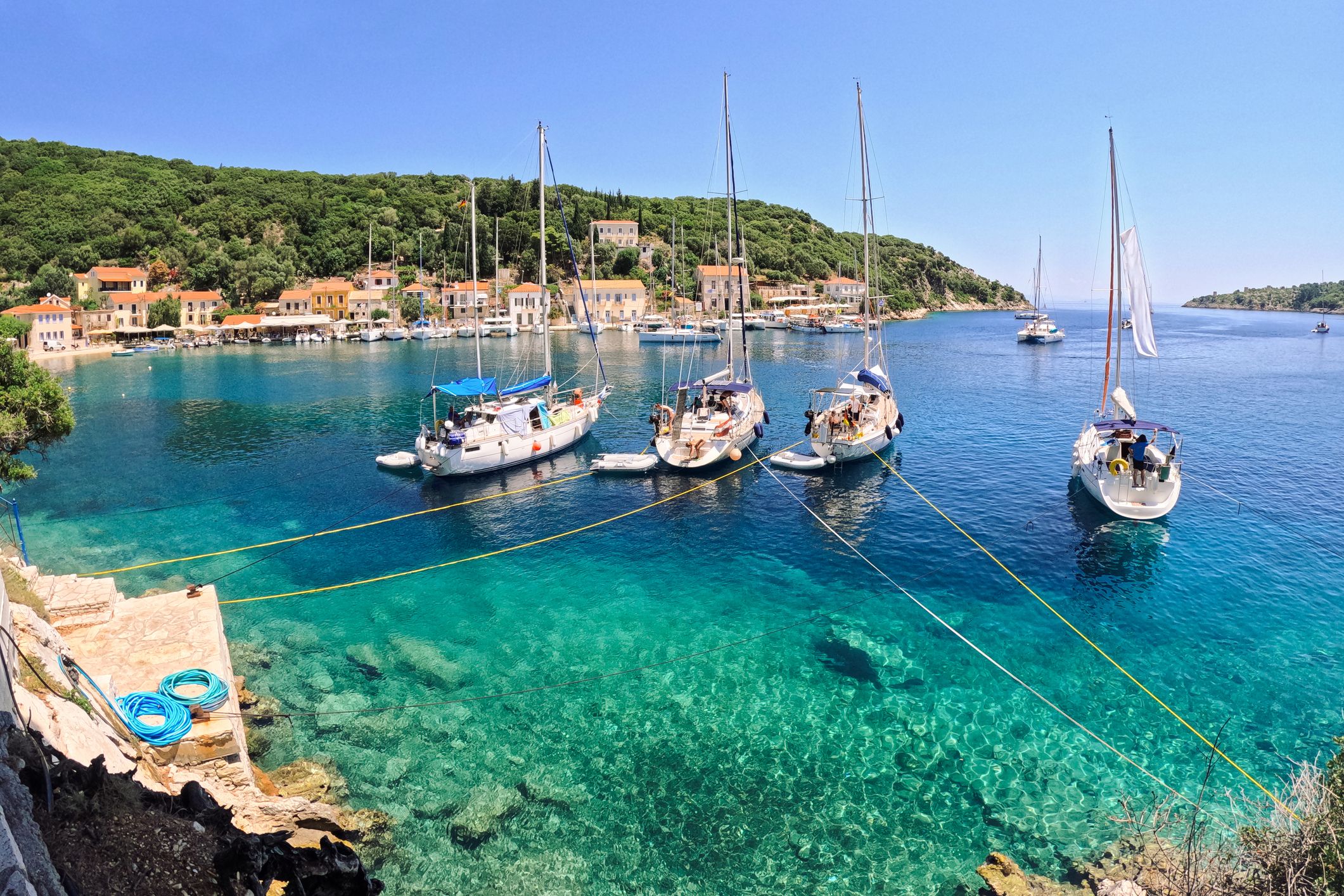
As the distances between northern Sporades are reasonably short, there is an abundance of nice and sheltered anchorages. Mooring in this area is like elsewhere in Greece - you will use your anchor to berth stern or bow-to, or you will anchor with a long line ashore. Electricity and water in the town harbors are paid separately through a token. Bear in mind that potable water is a scarce commodity in the Northern Sporades and comes with a higher price.
Best routes
International flights land on the island of Skiathos; however, you can find the best offer of sailing boats in Volos. The whole area in the Gulf of Volos is well-protected from Meltemi as it is situated in a 15 nm wide circle and surrounded by massive mountains. This large bay with several secluded coves and charming towns is worth visiting. Therefore, we recommend starting off your sailing trip from Volos Marina. When forging plans, count the distance and time needed to get from Volos to Sporades and then back.
The ideal stops before reaching the first Sporades island closer to the mainland are anchorages on the Pelion peninsula located at the end of Pagasetic Gulf. Bays such as Agia Kiriaki harbor, Pithos Bay close to the Trikori town or an isolated Andriami anchorage provide good and beautiful shelter for day 2 and day 6.
For a stress-free vacation, we don't recommend sailing further than Kyra Panagia. From Volos, head to Skiathos, from Skiathos with a stopover in Tsougria to Skopelos, next day, hop off in Alonissos. From Alonissos, you can easily reach Kyra Panagia, an almost intact island with breathtaking natural scenery. From Alonisos, you will return to Skiathos or Pelion again.

Suggested sailing itinerary for 7 days
Our suggestion assumes that you will leave the next day, however, feel free to set sail already on Saturday to get more time for the islands. As always, you can adjust your plan on the go - Sporades are an area that makes planning rather easy.
- Day 1: Volos
- Day 2: Volos to Agia Kyriaki (mainland) (18 nm)
- Day 3: Agia Kyriaki to Skiathos (15 nm)
- Day 4: Skiathos (Koukounaries/Kechria) - Skopelos (Loutraki) (16 nm)
- Day 5: Skopelos - Alonissos (Votsi) / Peristera (20 nm)
- Day 6: Alonnisos - Andriami/Platanias (mainland) (30 nm)
- Day 7: Andriami - Volos (30 nm)
You can find the route on Google Maps on this link.
Day 1 - Volos (0 nm)
Your journey begins and ends in the port Volos. It's a large commercial city handling most of the exports from the Thessalian area. The marina offers excellent customer service with an individual approach, and the staff is very amiable.
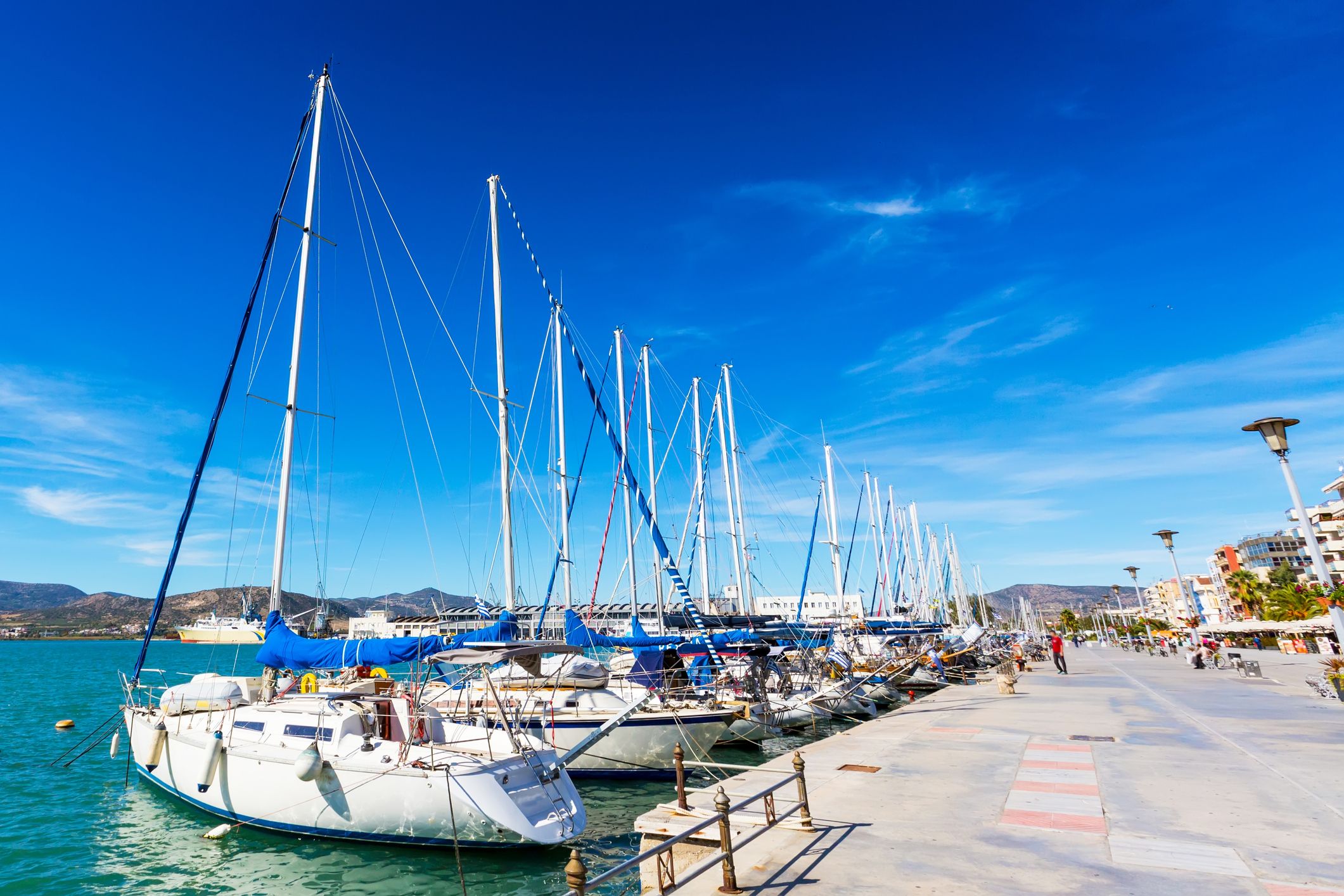
Depending on the time you checked in, you can either set sail to the Trikera area at the exit from the Gulf of Voros today or stay the first night in Volos. Volos is a nice city with plenty of dining options and tourist attractions. You can go to the old town for a walk and stop by for some traditional Greek cuisine, for instance in the Staphylos or Mezen restaurant. Get a welcome shot of ouzo and let your tasting buds explode with tasty Greek, Cretan or fusion gastronomy.
A favorite thing to do when in Volos is to take a day-long guided tour to the Meteora site, a surreal place with six old Greek monasteries built on the top of rock cliffs and set in jaw-dropping surroundings. It is undisputedly a lifetime experience. You can leave it for the end of your trip.
Hiking the Pelion Peak is another sought-after activity. Pelion mountain ridge is considered one of the best hiking locations in Greece. It is one of those places which still breathe authenticity. Legend has it that the Pelion peninsula is the mythical home to the Centaurs.
Day 2 - Volos - Agia Kyriaki (18 nm)
Take it slow and make some lunch or swim breaks before reaching the village at the mouth of the peninsula - the picturesque fish village Agia Kyriaki. Today you will be amazed with the beautiful views and good food.
What to see
On your way to your overnight anchorage, stop by bays close to Chorta or Pythos for a nice swim. Once in Agia Kyriaki, have dinner in one of the four tavernas here. Go for a walk uphill to the Trikeri village. The path is steep, 40 minutes long, but very rewarding. While walking up on the preserved 300-year-old cobblestone path that connects the Trikeri village with the beach in Agia Kyriaki, you will see a scenic view of Pagasetic Gulf. Next day or still today, don't miss a dive to the wreck of an old boat named Good Luck.
Where to stay?
You can anchor and moor at the Agia Kyriaki’s pier or get mooring lines from one of the taverns here if you agree to have dinner here. Otherwise, it is tricky to use the quay. Our tip is O Kavos taverna with super welcoming staff, who help you to moor. The food is fresh and for a reasonable price. Try their fried anchovies and prawns.
If you prefer a place with no sign of human existence and the weather is calm, sail an additional 10 miles further to the outside of the Pelion peninsula. Andriami is a little beautiful cove, totally isolated and well-sheltered from all but SW direction. You can observe Skiathos from this bay. Anchor in 7-10 meters and take two lines ashore to tie them around rocks next to the beach.
Day 3 - Agia Kyriaki - Skiathos / Tsoungria (20 nm)
Skiathos is nicknamed The Greek Riviera, and as the name suggests, it is a popular destination. The island is cosmopolitan but still very lovely, thanks to sandy beaches and lush vegetation.
What to see?
The capital Skiathos turns into a bustling town with loud parties during the summer. Generally it is a nice vivid town great for evening walks.
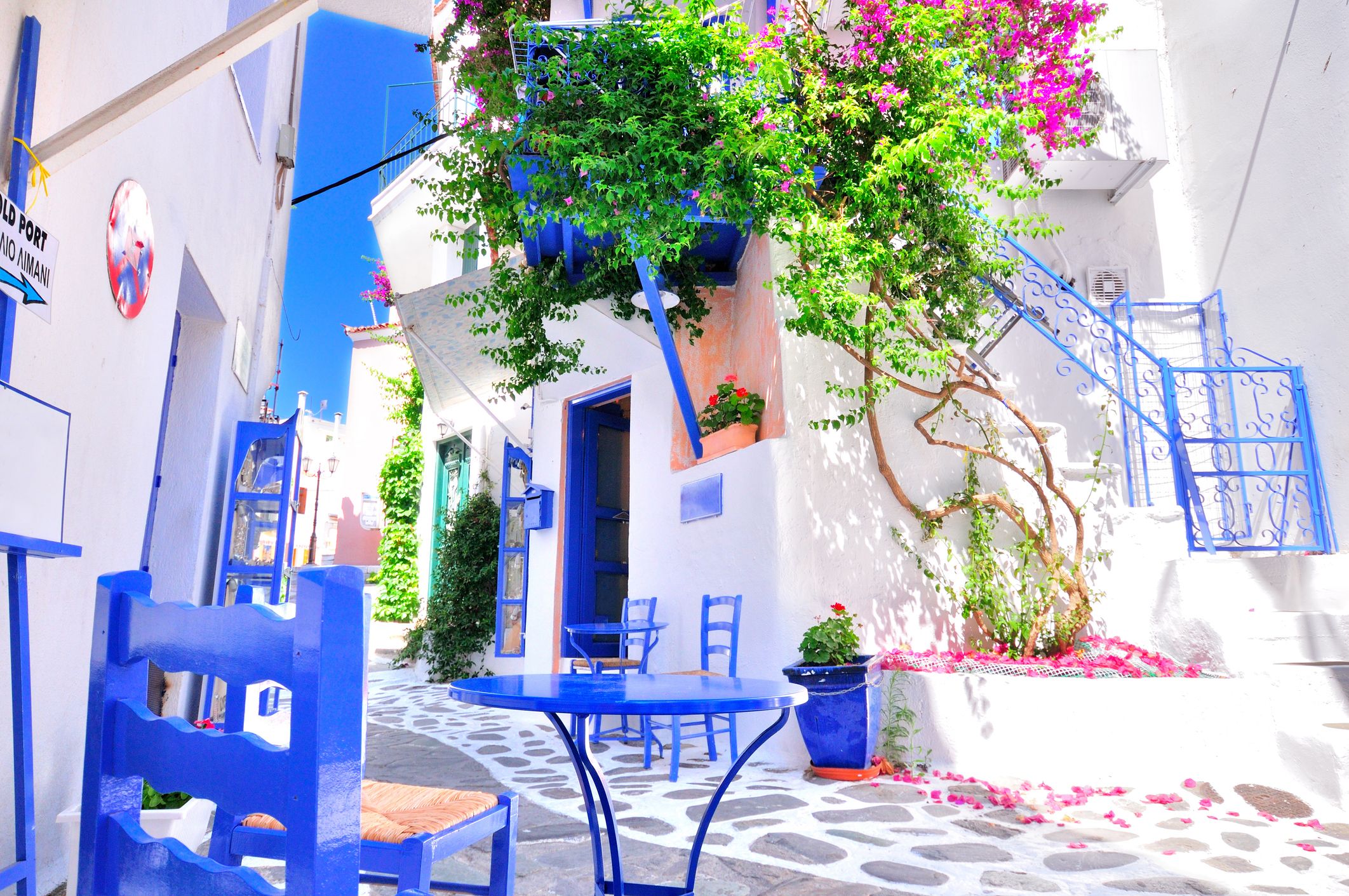
Many anchorages are full of jet skis and speedboats during the day, but in the evening, they reveal their true beauty. One of the most beautiful beaches in the Aegean Sea is the beach in the Koukounaries bay. The beach is long, covered with white sand and ringed by pine trees. You can either just stop off there or stay overnight if it's not too crowded.
A popular location to sail to is the picturesque Lalaria Beach on the north of Skiathos, best accessible by boat. Allegedly if you sail under a stone gate, you will stay eternally young. In our opinion, the location is too hyped in the summer, and it loses its charm. Moreover, you would need to leave a person or two onboard since the anchor does not hold reliably.
Where to stay?
If you want to see the Skiathos town in the summer, bear in mind that there are plenty of daily trip boats and ferries heading to the capital, which results in the harbor being very busy and full. Off-season, the town is much nicer and the town quay more welcoming.

A similar approach applies to the famous spot Koukounaries. Dropping an anchor here is tricky; you have to search for sandy patches. The place offers great protection, especially from northerly winds. Although the bay gets quiet only in the evening, the environment is beautiful. Off-season, it is a stunning anchorage.
An alternative is a superb little bay Krifi Ammos west of the Koukounaries, with easy anchoring and good protection. It is one of those places to practice the art of doing nothing, just enjoying nature and sunset. The northwest of Skiathos provides good protection from the NE-S winds in the bay of Kechria. There are two stunning sandy beaches easily reachable by dinghy and surrounded by mountains, which creates a spectacular sunset performance. We highly recommend taking a stroll through the magic forest to a monastery.

Last but not least, there is another tip for spending a lovely night anchored when the wind is low and when there is no northerly wind. The little islet Tsoungria has two suitable bays - one is in the west and another in the east of the islet. You drop your anchor to 5-8 meters in the sandy bottom. The bay is neither crowded nor loud; there are two tavernas open till evening, so the night goes on without any music.
Day 4 - Skiathos (Kechria) - Tsougria - Skopelos (Loutraki) (15 nm - 18 nm)
When heading to Skopelos, take a swim break on Tsougria island (if you had not made it your overnight spot of choice the night before of course). Skopelos offers several alluring options for what to see and where to anchor.
What to see?
The island of Skopelos is one of the greenest islands in Greece. People learned about its existence mainly thanks to the Mamma Mia! musical. It is here on Skopelos in its northwest part where Pierce Brosnan and Meryl Streep held their iconic movie wedding. With fair winds and good conditions, you may be able to sail to the movie bay and set foot in the chapel. Apart from being so green, the island is also dotted with hundreds of churches, mainly in the capital Skopelos.

We suggest taking a trip from Skiathos alongside the west coast of Skopelos. That way, you can stop by stunning beaches, for instance, the one between Panormos and Loutraki. Kastani Beach is an ideal stop for a pleasant swim or lunch. You can finish your today's trip either in Loutraki on the west or in the buzzing capital Skopelos on the east. Loutraki is an enchanting small place with options to go for at least two worthy trips. You can hike to Glossa village and walk zig-zag among narrow houses, staircases, churches, colorful balconies, and steep lanes. The view is jaw-dropping, similar to the one you can get from a cliff with the famous chapel that made it to Hollywood.
For those who prefer town marina and town vibes, sail further to Skopelos town. The town is cozy and a bit quieter than Skiathos. This town of churches (120 to be precise) piled upon one another around an amphitheatre is pretty compact - you can easily experience a nice swim close to the port, then stroll downtown and savor a great dinner. All within a short distance and time.
Where to stay?
Skopelos town marina can be a risky place because of ferries. Call there in advance, book your place and verify where the sailing boats are allowed to moor. You can refuel your water and electricity solely through tokens, so better check the opening hours of the kiosk issuing these tokens.
For the final overnight destination, we recommend Loutraki. The marina and port are small but nice. The Loutraki port, with the recently renovated floating pontoon, provides shelter from meltemi, but the swells from ferries can be sometimes unpleasant. There is no official harbormaster.
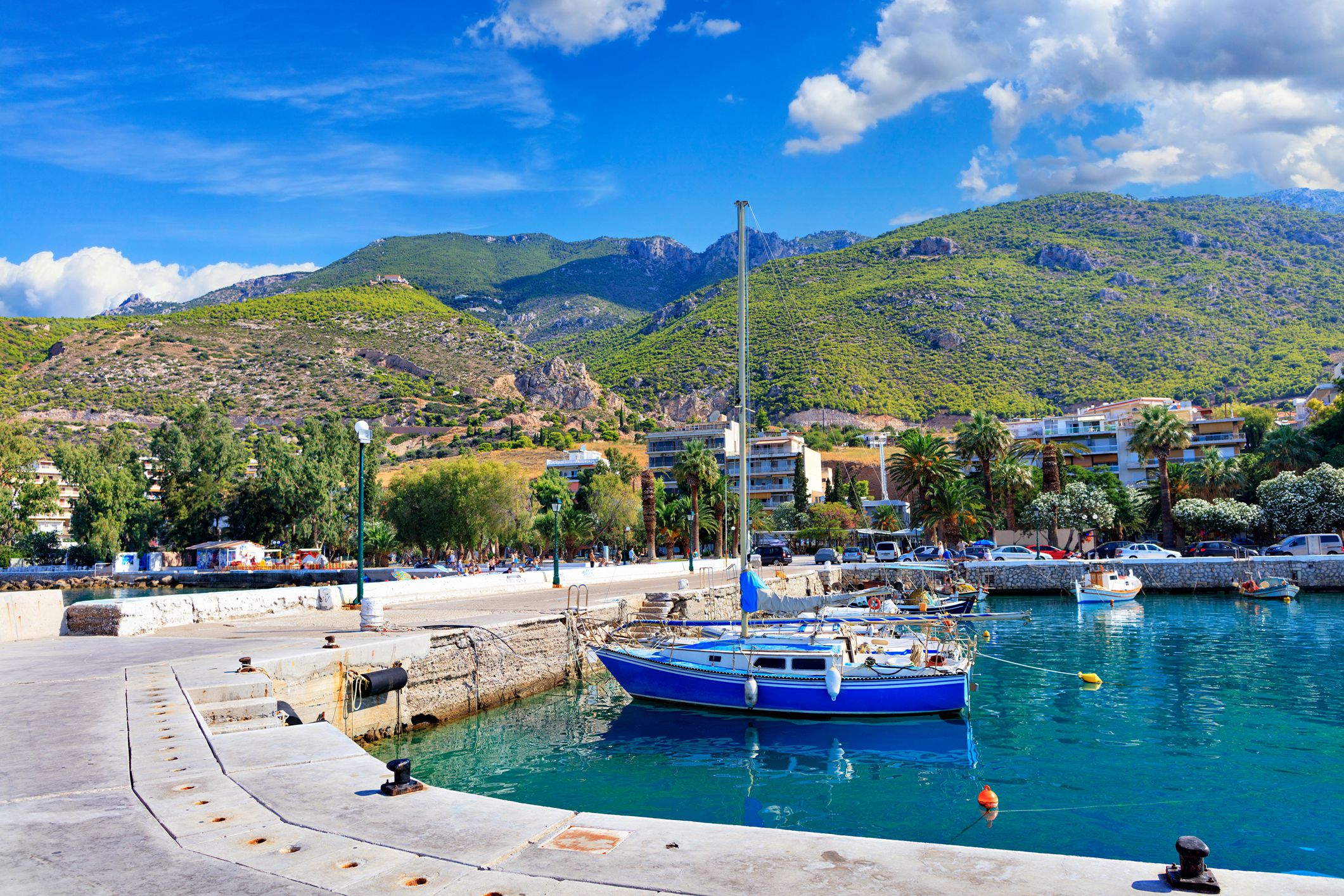
Explore the town, take a taxi to the chapel of St.John or go for a hiking trip to the village Glossa uphill above the port to watch the sunset from the rooftop of one of the bars or tavernas. Our tip is to grab a bite and drink in the cozy place Rouga, situated in the middle of the village. This hidden gem serves tasty “meze” (finger food) and maintains an authentic atmosphere thanks to nice decorations, friendly staff and Greek music.
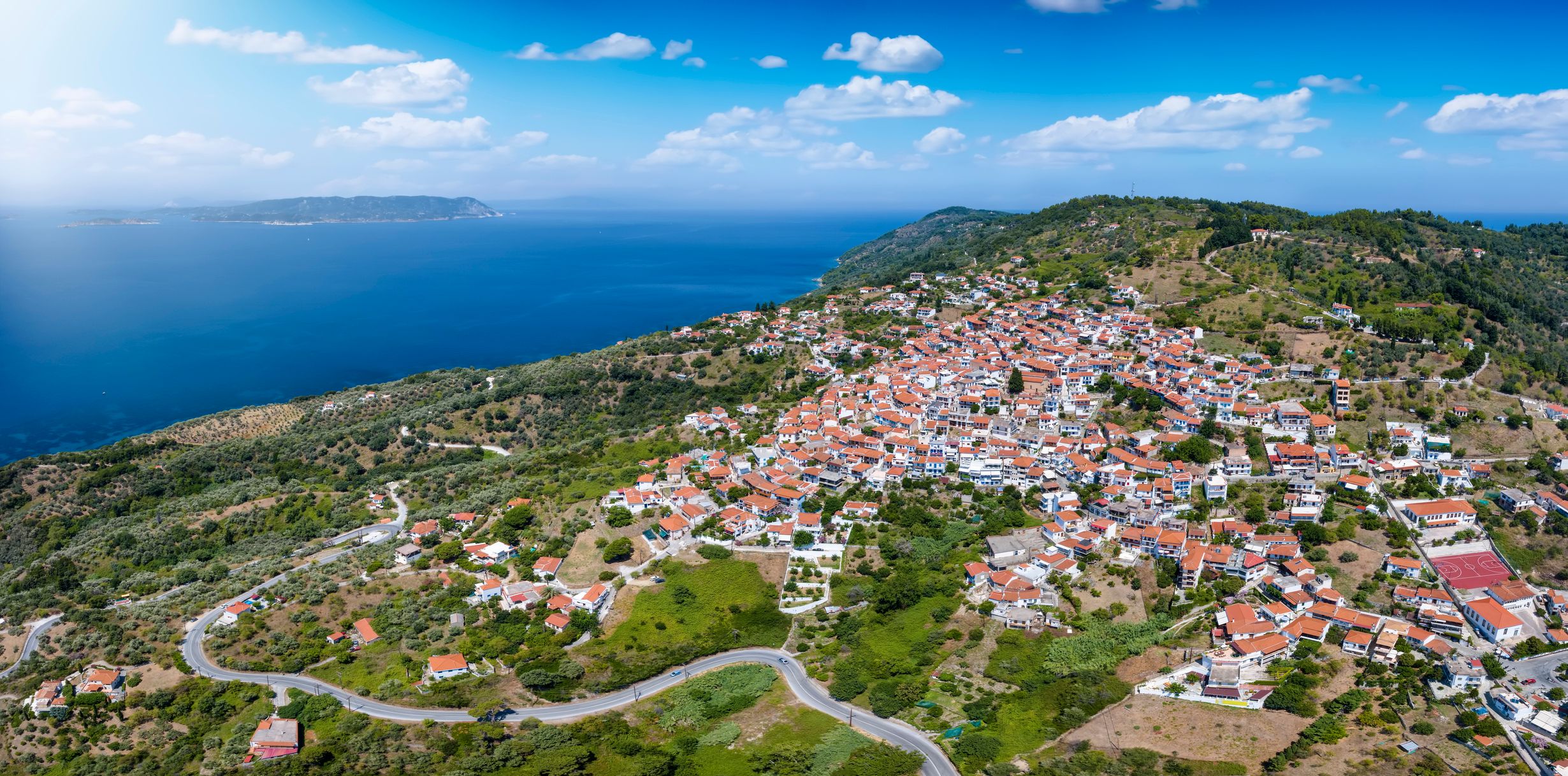
If you prefer tranquil places with fewer people and no ports, stay in Limani Panormos. The bay is well-protected from W to E winds (open to N), however, due to unsteady anchor holding, definitely add lines ashore. The whole setting is wild and dense with forest, making this place a relaxed anchorage.
Day 5 - Skopelos - Alonissos/Peristera (20-25 nm)
Book your entrance tickets for the marine park, and then get ready to explore the wilderness. Continue sailing alongside Skopelos island and turn to the south part of Alonissos. You can either head to a small island Peristera right next to Alonissos, or to one of the numerous spots on the SW shore.
What to see?
The bay Agios Ioannis in the east of Skopelos is a bay you should not miss when the conditions are right, especially when you decide to circumnavigate the island to get to Alonissos. Spending a night here can be too risky. Therefore we suggest visiting the astonishing chapel on the cliff either the day before by taxi from Loutraki or today in the morning by boat. On a day with no meltemi and ideally, almost no wind, drop an anchor beneath this cliff and then climb up the steps until you are rewarded by a romantic view.

Alonissos is a breathtaking location where lovers of sea, solitude and sunsets will be thrilled to spend some peaceful time. The island was called Ikos in ancient times, and it is a place with the oldest evidence of human remains in the whole Aegean. Traffic relies more on donkeys than cars, and the island aims to become one of the most eco-friendly Greek islands.
In case you fell in love with ancient Greek villages, there is another one on this island too. The old village Chora is conveniently accessible from the bay Mikri Mourtia, a nice stopover for a swim or a short 1,5 km hike to the charming Chora. Other options for stopovers are the bays Tzortzi Gizmos and/or a red cliffy cape Kokkinokastro. Both bays boast crystal-clear water and a fantastic environment. The anchor holds well in both places.

Alonissos, together with other adjacent Northern Sporades islands, belong to the National Marine Park. The reserve was created with the objective to protect endangered species, such as the Mediterranean monk seal, dolphins and birds. Watch out for anchoring restrictions in some parts, especially if sailing to islands northeast from Alonissos to Zone A. Moreover, there are parts where you need to keep at least 200 meters off the NW coast of Alonissos. In Steni Vala, there is a rehabilitation centre for monk seals - for those who are interested in marine wildlife, this information centre is well worth a visit.
Where to stay?
It can be hard to choose where to stay. If you need facilities and a port, head to Patitiri, the capital of Alonissos. There are shops, tavernas, water and electricity, and a promenade. It is also a convenient starting point for those who want to see the fabulous view from the old town of Chora. Take a bus or go uphill on foot. Although the location is pretty, the mooring here is less. Watch out for the position of masts and crossed chains.
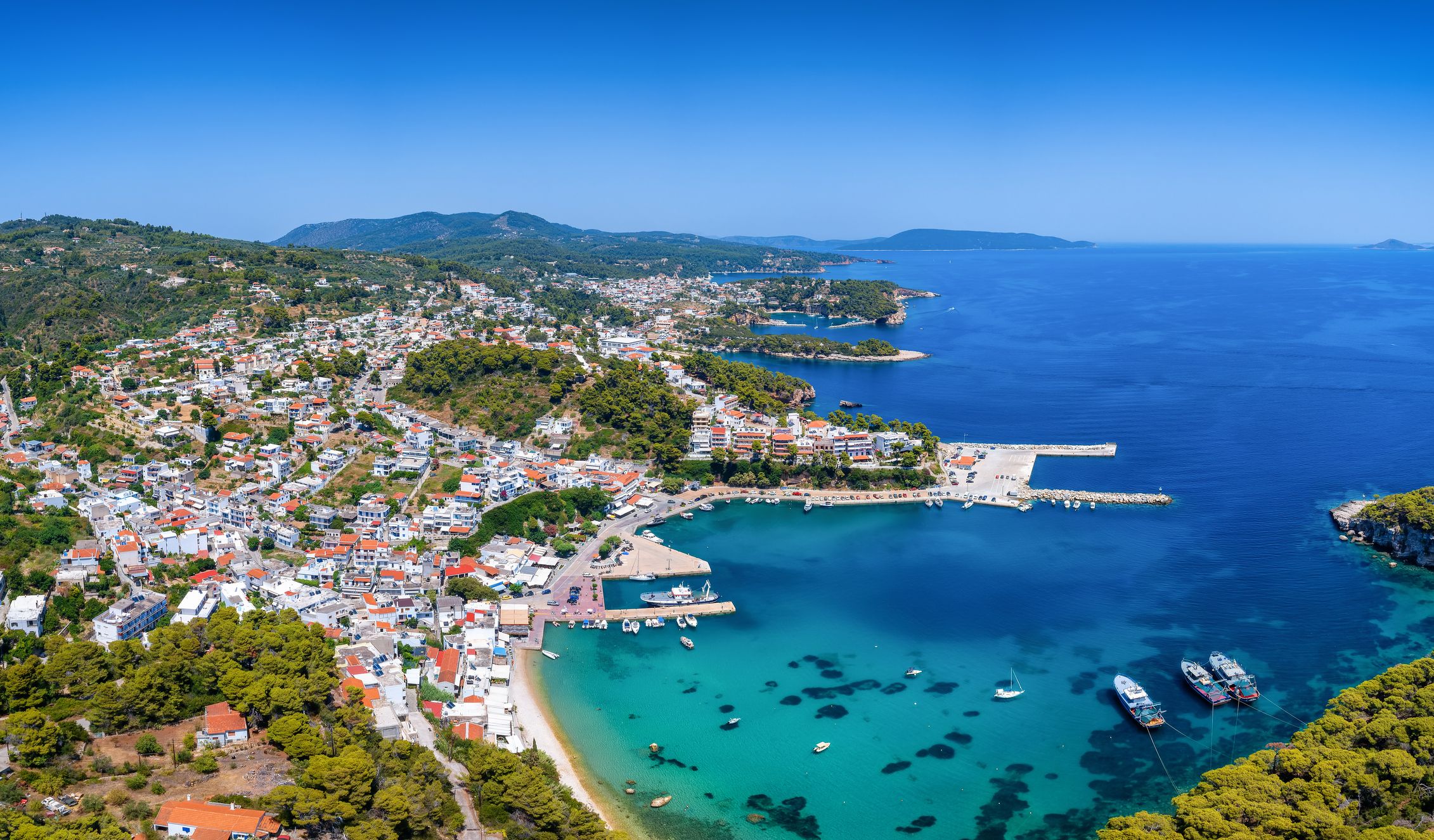
Anchorage Votsi may be a better alternative since the anchoring is stress-free here, and Patiriti is just a short walk away anyway. Votsi provides a good shelter from almost all directions except S. Those who want to feel blessed with solitude and perfect calmness can set sail to the islet Peristera. The Ormos Peristera bay is perfectly sheltered from meltemi, but there are no amenities and barely a signal.

Day 6 - Alonissos - Andriami/Platania (30 nm)
Since you need to consider the longer distance to make it back to Volos marina on Saturday, we suggest choosing your penultimate anchorage as close to the mainland as possible.
The returning route showcases captivating sceneries around Alonissos and then south of Skopelos. Feel free to stop by for lunch or a swim break in the bays mentioned in Day 5. On the southeast shore of Skopelos lies a bay, Staphylos - a perfect stop for the snorkelling part of your crew.
Andriami, situated in the Pelion peninsula, will protect you from N winds. If you prefer to moor to a pier and have some beach and bars close to you, head to a neighboring bay Platanias. In the season of 2024, they plan to finish the construction of a new pier and breakwater.
Day 7 - back to Volos (31 nm)
On your way back to home marina, feel free to stop by Amaliopolis - a lovely little village with a small port situated on the mainland. The place has an island atmosphere and it is a nice goodbye to your island-hopping adventure.
We wish you a pleasant voyage and fair winds!
